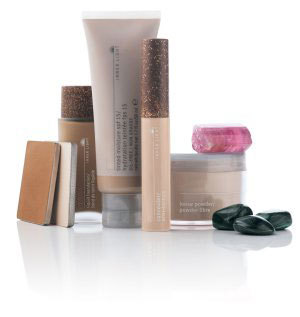Make up is an integral part of most women’s morning routine. With prices ranging from $1 to $75, there is surprisingly little variation in the ingredients found in most products. Make up consists of a coloring agent and a carrier. Some make up includes sunscreen or vitamins said to improve the skin’s condition or allow the make up to last longer. Most ingredients in make up are unpronounceable, and the ingredients are not always good for the skin.
One of the most common ingredients in make up is talc. Talc is a known carcinogen and can cause lung damage. It clogs pores and can cause blemishes. It also fades quickly and creases easily. It is approved for use in cosmetics, because it is felt to be safe in small amounts. It is used in make up because it is cheap and widely available.
Propylene glycol is included in many make up and beauty products as a humectant. It is also included in brake fluid and antifreeze. According the the Material Safety Data Sheet, it can cause headaches, nausea vomiting, and central nervous system depression and can reach the blood stream through skin absorption.
Coal Tar Dye (which is usually listed as D&C; Blue #1, Green #3, Yellow#5, Yellow #6, Red #33, or phenylenediamine) is found in shampoos and hair dyes and in some make up. It can cause severe allergic reactions, headaches, asthma attacks, fatigue and increased risk of lymphoma and multiple myelonma.
Mineral oil is a petroleum by-product that clogs pores, worsens acne and slows down skin regeneration. It can cause premature aging and coats the skin so that it cannot eliminate toxins. It is in many products, including baby oil,because it is extremely cheap.
Aluminum is found in most anti-perspirants. It blocks pores so sweat can not escape the skin. It has been linked to Alzheimer’s Disease.
Bismuth Oxychloride is a by product of iron mining. It is used in some mineral make ups. It is a large molecule and can clog pores, cause stinging and skin irritation and increase break outs in people with sensitive skin.
The FDA allows mercury compounds to be used in eye make up as long as parts per million does not exceed 65. Mercury is known to be a cancer causing substance. It is being phased out of old fashioned glass thermometers.
Not all makeups contain harmful ingredients, and most that do contain them only contain a small amount. Unfortunately, the cosmetic industry is self-regulating meaning there is no oversight into what chemicals find their way into the beauty products and how many of these chemicals are toxic.



